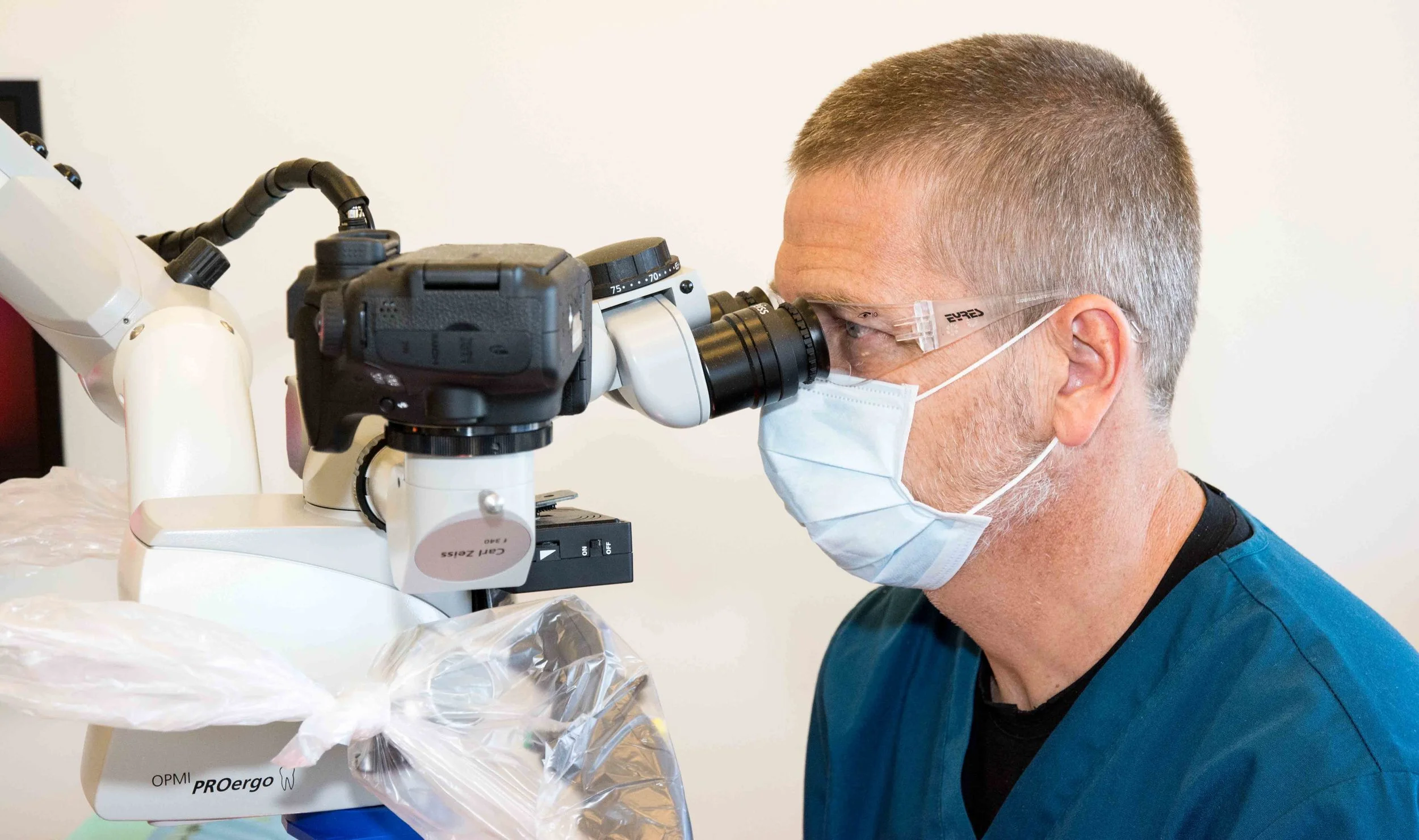What Is Endodontic Treatment?
Endodontic treatment deals mostly with the management of problems involving the pulp inside the tooth. This tissue is commonly (and incorrectly) referred to as the nerve of the tooth. The pulp does contain some nerve fibres but mostly consists of connective tissue and small blood vessels. It is found in small passageways, known as root canals, which run through the roots of the tooth.
The main role of the dental pulp is to control the growth and development of the tooth during childhood. Although important during development of the tooth, it is not necessary for the ongoing function of the tooth, which continues to be nourished by the tissues surrounding it even after the pulp is removed. As such, a tooth that does not have a pulp is not a dead tooth.
The dental pulp is a very delicate tissue and it can become inflamed or infected. The most common causes of this infection are deep decay, leaking restorations, cracks in the tooth, and trauma. If inflammation or infection of the pulp is left untreated then it can lead to pain, swelling and perhaps an abscess.
Endodontic treatment (also known as root canal treatment) removes inflamed dental pulp and infection from the root canal system. All general dentists have been trained to perform basic endodontic treatment but complex cases are often referred to an endodontist - a dental specialist with a minimum of two years’ post-graduate training in the field of endodontic treatment. Glen and Ross are registered with the Dental Board of Australia as Endodontists, and their practice is restricted solely to endodontic therapy.
The treatment usually involves the following:
The tooth is anaesthetised with local anaesthetic to ensure that you are comfortable. It is then isolated with a thin sheet of rubber to prevent the bacteria that are naturally present in your saliva from entering the tooth whilst the treatment is performed. A small opening is made in the biting surface of the tooth to gain access to the root canal system.
The inflamed or infected pulpal tissue is then removed with fine, flexible instruments called endodontic files.
The root canals are shaped, cleaned and disinfected
The final step is to seal the root canals with a special filling material to prevent reinfection.
After the final visit you must return to your dentist to have a crown or other restoration placed on the tooth to protect and restore it to full function.

